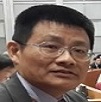Day 1 :
Keynote Forum
Grace N Ijoma
Institute for the Development of Energy for African Sustainability
Keynote: Comparative evaluation of enzyme production efficiency of monocultures and paired interactions of fungi on different agricultural substrates
Time : 09:00AM

Biography:
Dr. Grace N Ijoma is a senior lecturer of Biotechnology at the Pearson Institute of Higher Education and a postdoctoral fellow at the University of South Africa. Her PhD focused on antagonistic interspecific interactions amongst fungi. Previous paper presentation of portions of this work was presented at 8th International Conference on Environmental Science and Technology. Houston Texas, USA in 2016 and was judged first place paper. She is eclectic in her research interests and has a keen interest in several areas including Bioprospecting of niche environments, Food Microbiology, Environmental and Industrial Microbiology and Biotechnology (particularly Fermentation technology and process optimization), Microbial enzymes and biodegradation of xenobiotic compounds including polyaromatic hydrocarbons, pesticides and synthetic dyes, Ground water quality research and Microbial treatment of industrial waste water, Solid waste management. She is currently supervising undergraduate and post graduate research projects designed towards industrially relevant applications
Abstract:
There is a renewed interest in finding sustainable energy sources with particular focus on agricultural waste residues. The justification for this perspective is that this eliminates the need to cultivate already scarce land mass and has the added advantage of utilizing agricultural residues that otherwise would have presented problems of waste management. However, the use of agricultural waste residue is significantly hindered by the difficulty in degradation of lignocellulose components of its structure. Ligninolytic fungi have the ability to degrade these agricultural waste residues but enzymes employed in the degradation process are produced in limited quantities and more often during the secondary metabolism by these organisms. Methodology & Theoretical Orientation: The objective of this study was to investigate a strategy that could improve the production of these enzymes and likely accelerate the organisms into secondary phase enzyme production mode. Dual culture combinations of 10 fungi that had previously demonstrated the ability to produce ligninolytic enzymes were cultivated on PDA to ascertain their interspecific interaction and also on three agricultural residues, corn cob, sugarcane bagasse and wheat straw. Spectrophotometric analysis of the enzyme activities of laccase (Lacc), manganese peroxidase (MnP) and lignin peroxidase (LiP) demonstrated that observed antagonistic invasions yielded an increased enzyme activity in dual cultures on all the substrates. Findings: The highest ligninolytic enzyme production was observed in invasion/replacement interactions that involved Trichoderma sp. KN10 with average mean value in MnP production was approximately 1.46 U/ml compared to all monocultures of 0.055 U/ml. Similarly, Lacc mean value was 0.10 U/ml compared to monocultures value of 0.05 U/ml. This study demonstrated and proved that antagonistic invasion by some fungi in co-culture, although dependent on substrate affinity, can increase production of one or more of the three enzymes laccase, lignin peroxidase and manganese peroxidase.
Keynote Forum
Muhammad Usman
Former Director General of Agricultural Research System, Pakistan
Keynote: Bioenergy is the powerful tool on the poverty reduction and hunger in the world particularly South Asia
Time : 09:30AM

Biography:
Abstract:
Keynote Forum
Bor-Yann Chen
National I-Lan University, Taiwan
Keynote: Exploring optimal supplement strategy of polyphenolics-abundant herbal extracts for bioenergy stimulation in microbial fuel cells
Time : 10:00 AM

Biography:
Abstract:
- Biofuels | Biomass | Bioethonal | Biogas
Location: Meeting Hall: Wright

Chair
Bor-Yann Chen
National I-Lan University, Taiwan
Session Introduction
Abderrahim Bouaida
University of Complutense, Spain
Title: One-step enzymatic ethanolysis of high free fatty acid Jatropha oil for biodiesel production.Improvement of cold flow properties

Biography:
Abstract:
Muluken Eshetu
Jimma University, Ethiopia
Title: Sequential production of methyl ester, bioethanol and briquette from spent coffee ground

Biography:
Abstract:
Wenquan Wang
Institute of Tropical Biosciences and Biotechnology, China
Title: Genomics approaching value added varieties with high efficiency bioethanol making in cassava (Manihot esculenta Crantz)

Biography:
Abstract:
Soo-Young No
Chungbuk National University, South Korea
Title: Utilization of higher alcohols to CI engines – A review

Biography:
Abstract:
M.K. Ogun
Hamburg University of Technology, Germany
Title: Biogas potential of deinking sludge from wastepaper recycling industry: Influence of dewatering degree and high calcium carbonate content

Biography:
Abstract:
- Biomass feed stocks for renewable energy generation | Processes for Bioenergy | Biofuels | Renewable energy | Biogas | Biomass
Location: Meeting Hall: Wright

Chair
Soo-Young no
Chungbuk National University, South korea
Session Introduction
Bismark Ameyaw
University of Electronic Science and Technology of China, China
Title: Determinants of energy production from biomass: Multivariate Panel Data Evidence for IEA-30 Countries

Biography:
Abstract:
Santhosh Pillai
Durban University of Technology, South Africa
Title: Untapped agricultural biomass into a value-added product: An enzymatic approach
Biography:
Abstract:
L E Macaskie
University of Birmingham, UK
Title: Novel biogenic catalysts with catalytic applications in bioenergy processes
Biography:
L E Macaskie did her BSc and PhD in Microbial Biochemistry (University of London) in the 1970s, moving to the University of Oxford (postdoctoral, then faculty staff in Department of Biochemistry) until 1991 when she took up a lectureship, then personal Chair, at the University of Birmingham in Applied Microbiology. Her dual interests center on bacterially manufactured nanoparticles and bio-nano minerals for nuclear decontamination processes and precious metal neo-catalysts for clean energy, green chemistry and environment. Needing hydrogen to feed her bacteria. She developed a process to make bio-H2 via fermentation of food wastes, outperforming other renewable energy processes in terms of energy balance.
Abstract:
Ramachandran Sivaramakrishnan
Chulalongkorn University, Thailand
Title: Biorefinery approach of microalgae feedstock for the production of É›-polylysine and biodiesel

Biography:
Ramachandran Sivaramakrishnan is currently a Senior Post-Doctoral Research in the Cyanobacterial Biotechnology (Biochem dept.) Group Led by Dr. Aran Incharoensakdi at Chulalongkorn University, Bangkok, Thailand. His research interests include the production of biofuels, value-added products, understanding the mechanism of biofuel productions and exploring value-added products. Before joining Dr. Aran Incharoensakdi lab, he worked as a Junior research fellow in the Department of Chemical Engineering at Anna University, India.
Abstract:
Environmental problems coupled with rapid depletion of fossil fuel and its resources prompted researchers to find alternative renewable resources and its commercialization. The biomass from microalgae with high oil content is a promising feedstock for the renewable resources. Compared with plants, microalgae can produce more oil per hectare with a shorter production cycle. The coupling of algae biofuels with high value compounds production widens the market opportunities which fits well with a recent trend of biorefinery concept. For biorefinery approach, it is essential to select the microalgae which contain high amounts of organic matters such as lipids and carbohydrates which can be used for biorefinery approaches. The present study focuses on the concomitant production of methyl ester and É›-polylysine from microalgae feedstock. The harvesting efficiency of Botryococcus sp. was increased up to 93% by treatment with a flocculant FeCl3 at 100 mg/L for 30 min. The DMC (dimethyl carbonate) mediated enzyme catalyzed in-situ transesterification of Botryococcus sp. yielded the maximum methyl esters of 93% under optimized conditions. The spent biomass was further hydrolyzed using acid and the hydrolyzate obtained was used to produce value-added product e-polylysine using Streptomomyces sp. The key components of sugar and MgSO4 involved in the ε-polylysine production were optimized whereby the maximum ε-polylysine production was achieved at 50 g/L sugars and 0.3 g/L MgSO4. The ε-polylysine production was further improved by the supplementation of important acids (lysine and aspartate) and TCA cycle intermediates (citric acid and α-ketoglutaric acid). The maximum production of 2.31 g/L was found with 4 mM citric acid supplementation after 130h. The present study demonstrated the effective harvesting method of microalgae and integrated production of methyl ester and ε-polylysine as a biorefinery approach. The promising path of the biorefinery concept in the present study will help to develop the economy based sustainable fuels and value-added compounds production in the near future.
Amos Oppong
University of Electronic Science and Technology of China, China
Title: Energy policies needed to transition to a green economy based on high-accuracy forecasts
Biography:
Amos Oppong is a Doctoral Researcher at the School of Management and Economics (SME) of the University of Electronic Science and Technology of China (UESTC), and a Member of the International Association of Energy Economists (IAEE). He specializes in environmental energy and economic modelling and forecasting.
Abstract:
Renewable energy (including bioenergy) is a key for economic developmental consistency and supply is necessary for keeping countries on a sustained growth path. In order to minimize cost due to over (excess supply) and/ or under supply (shortage), policymakers and stakeholders leverage on business-as-usual (BAU) energy demand projections as benchmarks to design and implement efficient policies. Existing high-profile energy demand forecasting models (such as NEMS) achieve relatively high accuracies for short- and medium-term projections but records high forecast inaccuracies when utilized for long term cases due to the massive assumption dependent explanatory variables whose assumptions often deviate from realized levels but are pivotal to the core forecasting modules. Here, we implement a relatively high-accuracy level, trend and seasonality consistent technique that is devoid of assumption driven variables for BAU long-term energy demand forecasting. We utilize the technique to forecast bioenergy and total primary energy supply in the USA. The results suggest that for the 2012-2016 fiveyear forecast, the accuracy of the proposed technique strikingly outperform the regression and double exponential smoothing (DES) benchmark models and record significant improvement up to ~10- fold on NEMS related reference case forecast as reported in Annual Energy Outlook 2011 (AEO2011) and AEO2012. Outputs from applying the proposed high-accuracy technique for long-term production and consumption projections show that total renewable energies will account for ~15.77% out of the expected ~101.75 quadrillion Btu total primary energy consumption in 2035; thus radical and revolutionary energy policies are required for USA to achieve the ‘100% renewables by 2035’ target approved by the U.S. Conference of Mayors in June 2017
